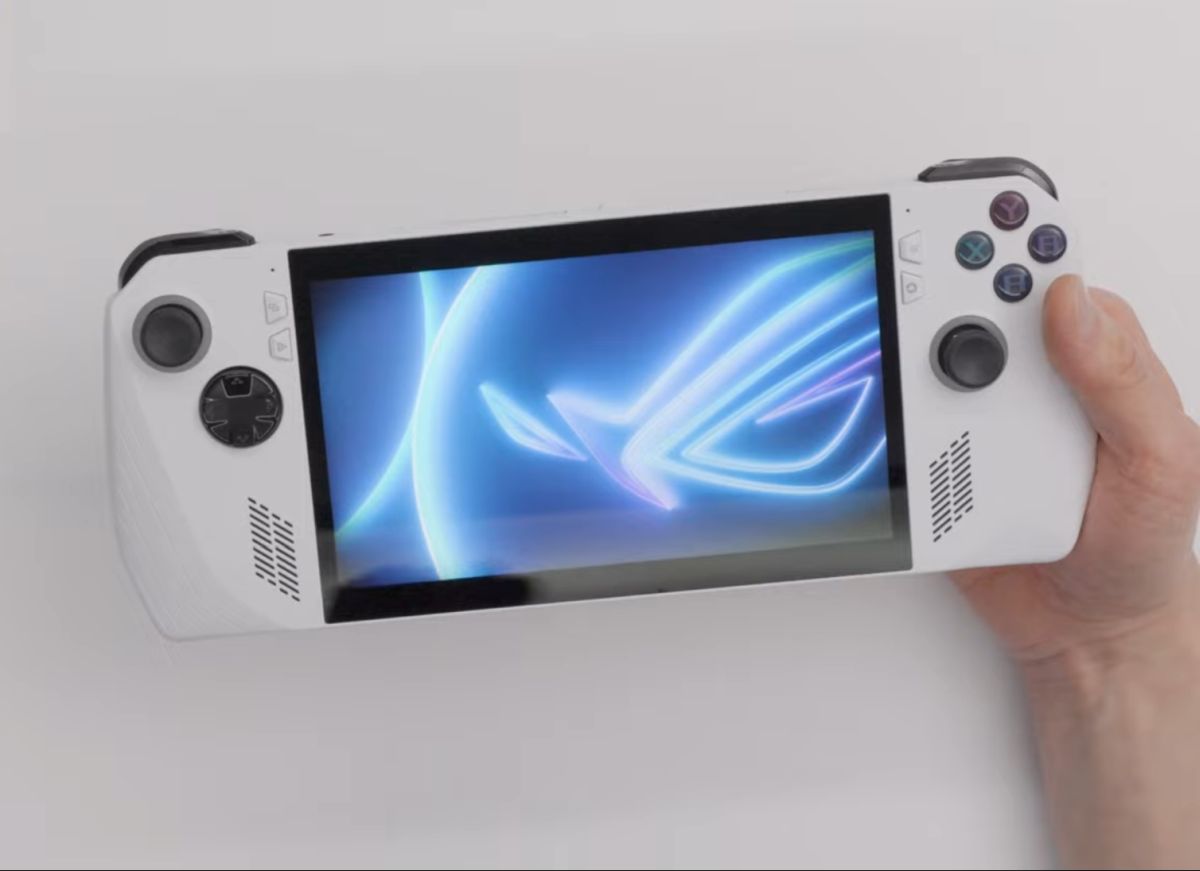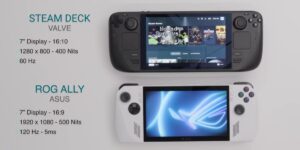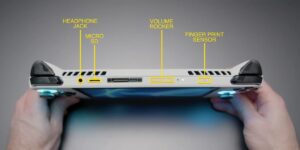It’s real. The ASUS ROG Ally is real and our gut feeling about the company trying to mask the existence of its handheld console – for however long it was planning – by announcing it on April Fools Day. As of today, though, the console is now out in the wild, at least in a prototype form.
A brief showcase and rundown of the ROG Ally was first posted by the Canadian TechTuber Dave2D, who also did a side-by-side comparison, thus also providing us with a slightly more in-depth comparison between the two handhelds. Again, it needs to be pointed out that the Ally Dave had in his hands was still a prototype unit and therefore, everything from the internals to its aesthetics could change between now and its yet unconfirmed launch date. Having said that, it does appear that many performance elements have already been set in stone for now.

Take the cooling of the ROG Ally as our first example. In the original announcement video, ASUS said that the console was fitted with its own Intelligent Cooling solution that is quieter than the Steam Deck, and Dave actually goes out of his way to prove that claim. In fact, he is able to quantify the difference in noise levels between the two gaming handhelds by about 16 decibels (dB), which is a lot in terms of the coil whine.
Then there are the hardware specifications of the ROG Ally. On the outside, Dave confirms that the display is a 7-inch Full HD display but with a 16:9 aspect ratio instead of the 16:10 on the Steam Deck. Not only that, but it is also brighter at 500nits and even has a refresh rate of 120Hz. Of course, in order for it to drive what ASUS says is “double the performance” of a Steam Deck on the handheld means that the portable machine would need to have some very powerful internal hardware.
Unfortunately, that train is brought to an abrupt end, with Dave stating that ASUS wasn’t divulging any further information about the chipset, save that it is genuinely a collaborative piece of work between the brand and AMD, and that it is actually based on the latter’s new Zen4 microarchitecture, and that it has a die lithography of 4nm and, from the sounds of it, the newer RDNA3 GPU architecture. For comparison’s sake, the Steam Deck’s own custom-made AMD chipset still uses the older RDNA2 GPU cores that first came on to the scene with its desktop Radeon RX 6000 Series graphics cards back in 2020. Further, while Dave’s video doesn’t share details about the memory and storage capacity, we could see that the NVMe 2230 M.2 SSD housed within was a WD SN740, which is a PCIe Gen4 SSD.
Moving back to the exterior of the ROG Ally, the controller layout is more akin to the Nintendo Switch’s design, given the asymmetrical layout of the analogue sticks. What the handheld doesn’t have is the dual trackpads of the Steam Deck, although reviewers the world over that played with the portable console haven’t actually found more than a handful of titles where the trackpads would be more appropriate.
But what really sets the ROG Ally apart from the Steam Deck is, as I’ve mentioned before, its ability to connect to one of ASUS’ XG Mobile eGPU. This alone may very well be a game changer for the gaming handheld industry because, as it stands, not even the Steam Deck is able to pull off gaming with an eGPU, its self-sustaining design be damned. For that matter, and because I forgot to mention it at the start, the Ally’s OS is Windows 11, meaning that you could possibly run other Windows-based programs on it, although that little bit remains unconfirmed at this point.
Then there’s the sordid topic of the price of the ROG Ally and, just as it is with the details of the chipset, ASUS isn’t providing any information about this either. However, the Taipei-based brand had told Dave that it would be priced “aggressively”. In other words, somewhere between the RM2000 and RM3000 mark, and on what sort of storage capacity will be available.
(Source: Dave2D)
Follow us on Instagram, Facebook, Twitter or Telegram for more updates and breaking news.








